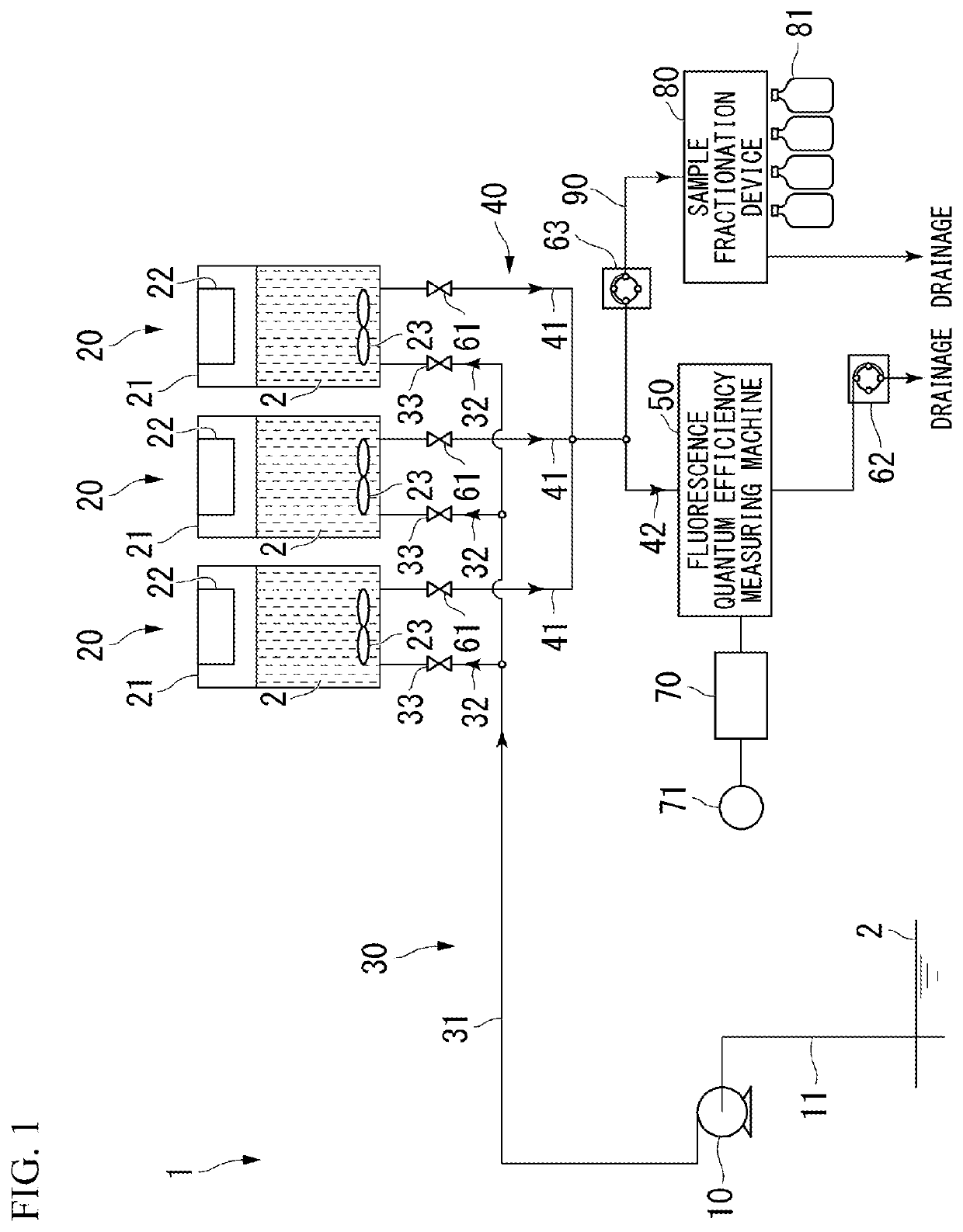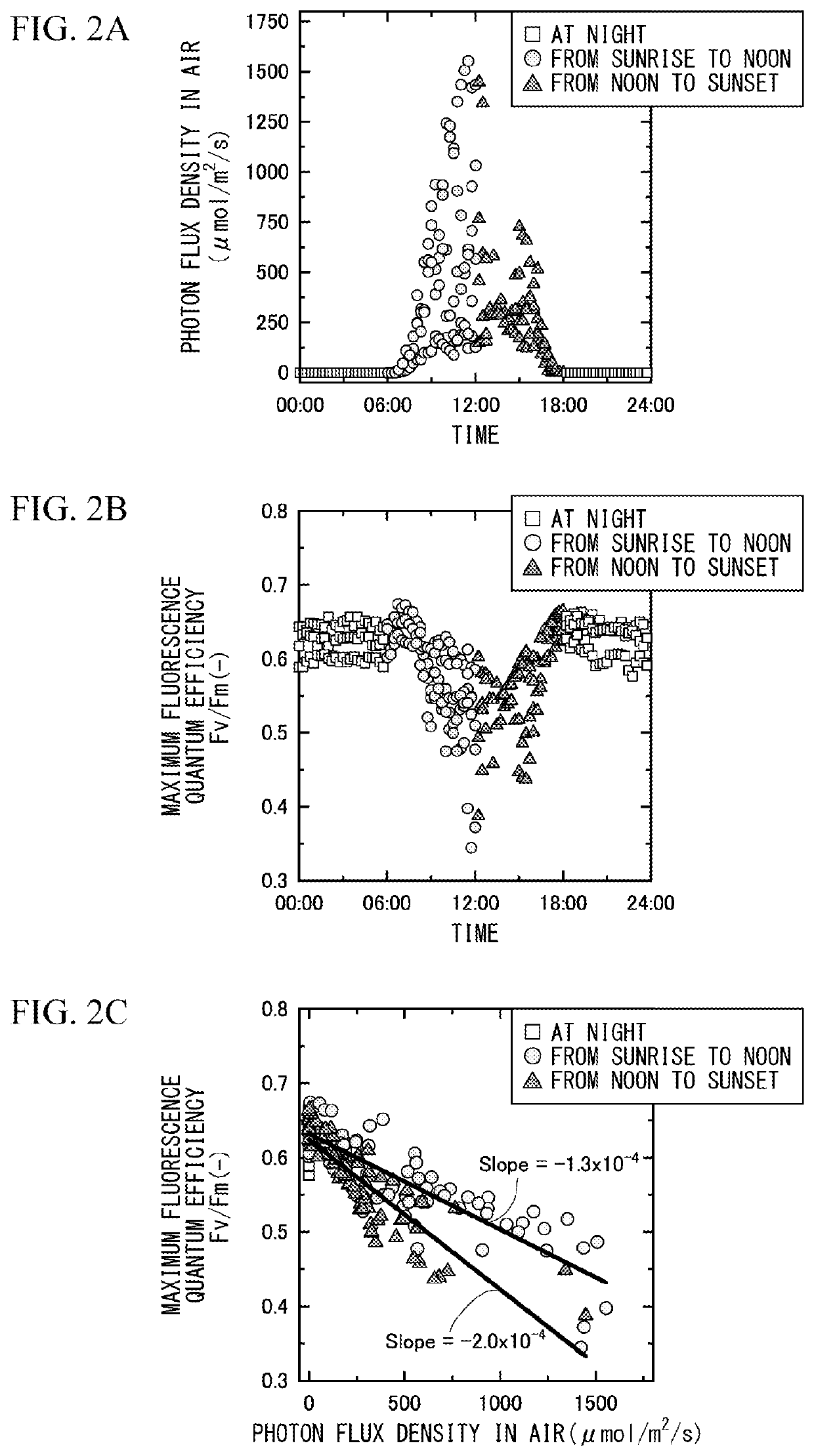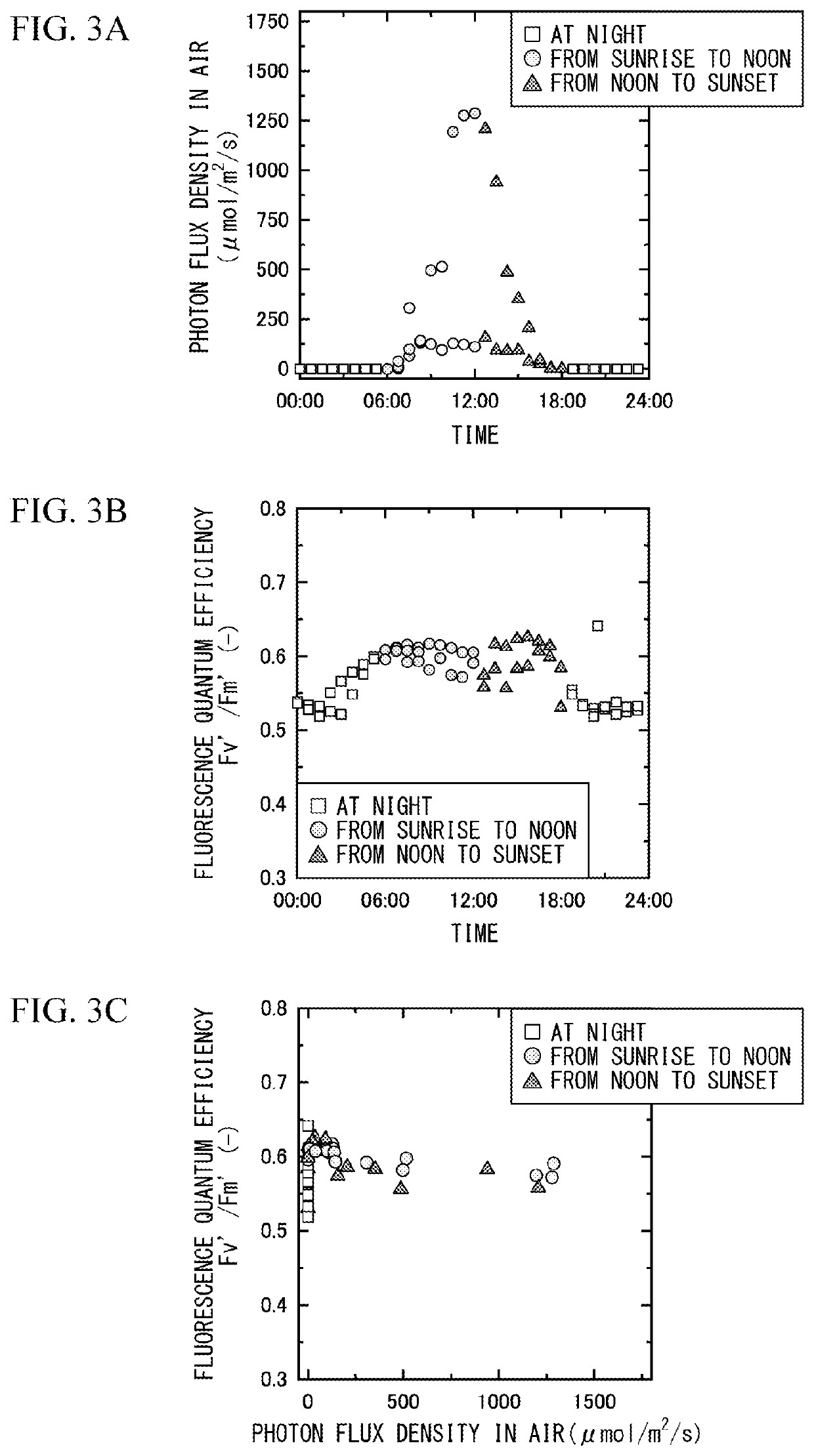Device for detecting contamination with photosynthesis inhibitor and method for detecting contamination with photosynthesis inhibitor
a technology of photosynthesis inhibitor and device, which is applied in the direction of fluorescence/phosphorescence, instruments, withdrawing sample devices, etc., can solve the problems of sudden inhibition of photosynthesis in surface seawater in the periphery of the plant, difficult real-time measurement, and equipment not suitable for water quality monitoring equipment in offshore plants. , to achieve the effect of simple method and low cos
- Summary
- Abstract
- Description
- Claims
- Application Information
AI Technical Summary
Benefits of technology
Problems solved by technology
Method used
Image
Examples
experimental example 1
[0161](Natural Fluctuation in Maximum Fluorescence Quantum Efficiency)
[0162]The influence of light, applied to phytoplankton during collection, on the maximum fluorescence quantum efficiency of the phytoplankton was analyzed. The analysis was continuously carried out on the Japan Agency for Marine-Earth Science and Technology research vessel Kaimei (voyage number KM17-12C) in the Okinawa Trough sea area for 98 hours.
[0163]The fluorescence quantum efficiency of a plant is a parameter for estimating the electron transfer rate of Photosystem II in a photosynthetic reaction. By holding a plant in a dark place, plastoquinone in the photosystem is completely oxidized. The fluorescence quantum efficiency here is referred to as the maximum fluorescence quantum efficiency.
[0164]First, the aerial photon flux densities acquired at 1-minute intervals were averaged every 15 minutes, and the diurnal fluctuation was analyzed. FIG. 2A is a graph showing the distribution of the aerial photon flux de...
experimental example 2
[0176](Removal of Diurnal Fluctuation in Fluorescence Quantum Efficiency)
[0177]A method of alleviating the diurnal fluctuation in the fluorescence quantum efficiency by irradiating the seawater with weak light in advance was examined. The analysis was performed in the Okinawa Trough sea area as in Experimental Example 1, and the experimental period was set to 61 hours continuously.
[0178]Surface water was collected in each of three light-blocking containers at a constant speed for 30 minutes. A phase difference of 30 minutes was provided for the time of starting the collection in each container. Each of the collected seawater was retained in each container and intermittently discharged from each container for 30 minutes.
[0179]The seawater in the light-blocking container was continuously irradiated with a white LED having a photosynthetic effective wavelength range (400 to 700 nm) at an intensity of 150 μmol / m2 / s. The fluorescence quantum efficiency of intermittently discharged seawat...
experimental example 3
[0185](Detection 1 of Heavy Metal based on Fluorescence Quantum Efficiency Fv′ / Fm′)
[0186]A method of detecting the presence of a heavy metal in seawater was examined based on the measured value of the fluorescence quantum efficiency.
[0187]Similar to Experimental Examples 1 and 2, surface water in the Okinawa Trough sea area was collected in one pretreatment tank. The pretreatment tank was continuously irradiated with light having an underwater photon flux density of (150 μmol / m2 / s) using a white LED having a photosynthetic effective wavelength range (400 to 700 nm).
[0188]After the irradiation with light for approximately 60 minutes, a sea-floor mineral simulated eluate containing zinc and lead was added to the seawater in the pretreatment tank in the combination of any of the concentrations listed in Table 1. The fluorescence quantum efficiency Fv′ / Fm′ of seawater in the pretreatment tank was measured from the start of irradiation with light to 180 minutes after the addition of the ...
PUM
| Property | Measurement | Unit |
|---|---|---|
| concentration | aaaaa | aaaaa |
| photosynthetic effective wavelength range | aaaaa | aaaaa |
| wavelength range | aaaaa | aaaaa |
Abstract
Description
Claims
Application Information
 Login to View More
Login to View More - R&D
- Intellectual Property
- Life Sciences
- Materials
- Tech Scout
- Unparalleled Data Quality
- Higher Quality Content
- 60% Fewer Hallucinations
Browse by: Latest US Patents, China's latest patents, Technical Efficacy Thesaurus, Application Domain, Technology Topic, Popular Technical Reports.
© 2025 PatSnap. All rights reserved.Legal|Privacy policy|Modern Slavery Act Transparency Statement|Sitemap|About US| Contact US: help@patsnap.com



